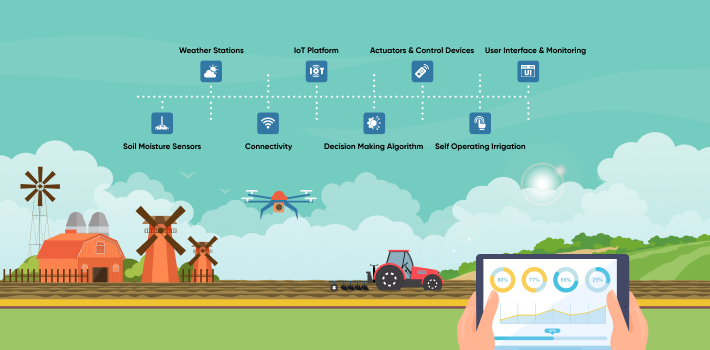In an era where technology intersects with every aspect of our lives, agriculture is no exception. The traditional methods of irrigation, often labor-intensive and inefficient, are gradually giving way to smarter solutions. One of the most significant advancements in this field is the implementation of Smart Irrigation Systems using the Internet of Things (IoT). This blog post delves into the transformative potential of IoT in irrigation, its benefits, components, and real-world applications.
Understanding Smart Irrigation Systems
A Smart Irrigation System leverages IoT technology to optimize water usage in agriculture. Unlike conventional irrigation systems, which operate on preset schedules regardless of weather conditions or soil moisture levels, smart irrigation systems use sensors and real-time data to deliver the right amount of water at the right time. This not only conserves water but also enhances crop yield and reduces operational costs.
Key Components of a Smart Irrigation System
- Sensors:
- Soil Moisture Sensors: Measure the water content in the soil to determine when and how much irrigation is needed.
- Weather Sensors: Collect data on temperature, humidity, rainfall, and wind to adjust irrigation schedules.
- IoT Gateway:
- Acts as a bridge between sensors and the cloud, enabling data transmission and communication.
- Controllers:
- Automated devices that activate the irrigation system based on data received from sensors.
- Cloud-Based Platform:
- Stores and analyzes data, providing insights and remote control via mobile apps or web interfaces.
Benefits of Smart Irrigation Systems
- Water Conservation:
- By delivering water based on actual need, smart irrigation systems can reduce water usage by up to 50%, addressing water scarcity issues.
- Enhanced Crop Yield:
- Optimal watering ensures that crops receive the right amount of moisture, leading to healthier plants and increased productivity.
- Cost Savings:
- Reduced water usage and labor costs translate to significant savings for farmers.
- Remote Monitoring and Control:
- Farmers can monitor and control their irrigation systems from anywhere using a smartphone or computer, providing convenience and flexibility.
- Environmental Sustainability:
- Efficient water use reduces the strain on local water resources, promoting sustainable farming practices.
Case Study: Smart Irrigation in Action
In Rajasthan, India, a region known for its arid climate, farmers have adopted smart irrigation systems to tackle water scarcity. By using soil moisture sensors and weather data, they have achieved a 30% reduction in water usage while increasing crop yield by 20%. This sustainable approach not only improves their livelihoods but also contributes to the conservation of the region's limited water resources.
Challenges and Future Prospects
While the benefits of smart irrigation systems are clear, there are challenges to widespread adoption. High initial costs, lack of awareness, and the need for technical expertise can be barriers for small-scale farmers. However, as technology advances and becomes more affordable, and as awareness grows, the adoption of smart irrigation systems is expected to increase.
In the future, integration with artificial intelligence (AI) and machine learning (ML) could further enhance the efficiency of these systems. Predictive analytics could enable even more precise irrigation scheduling, taking into account factors like crop type, growth stage, and historical weather patterns.
Conclusion
The Smart Irrigation System using IoT is a game-changer for agriculture, offering a sustainable solution to water management. By optimizing water usage, improving crop yield, and reducing costs, it holds the promise of revolutionizing farming practices worldwide. As we continue to face challenges like water scarcity and climate change, embracing such innovative technologies will be crucial for building a resilient and sustainable agricultural future.





Comments